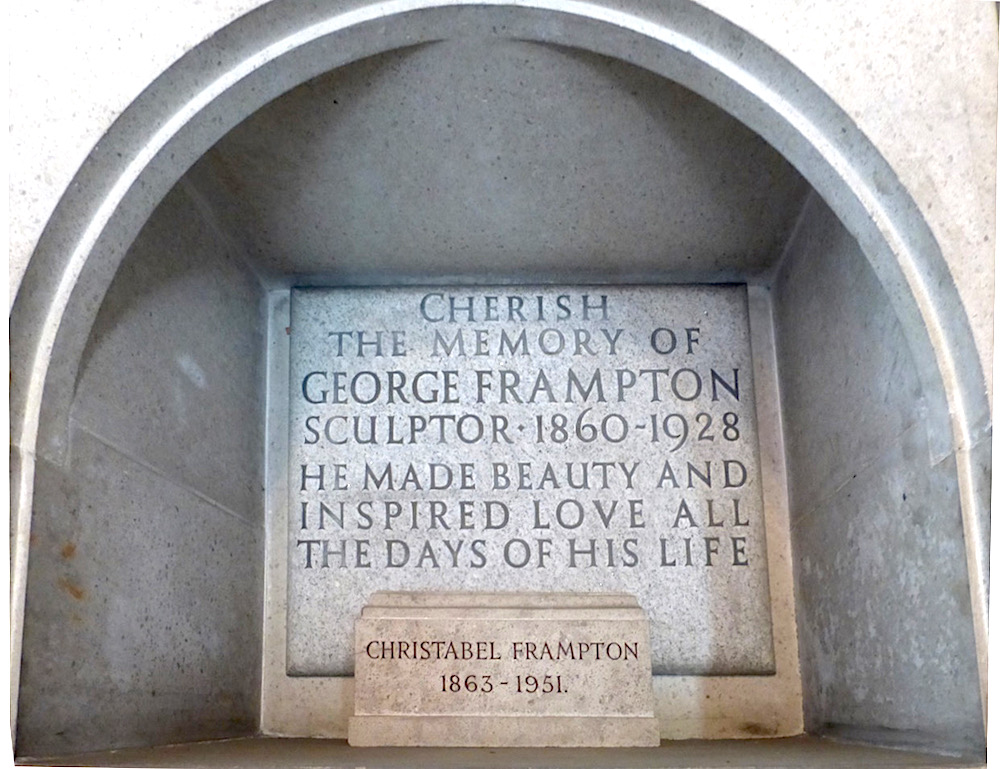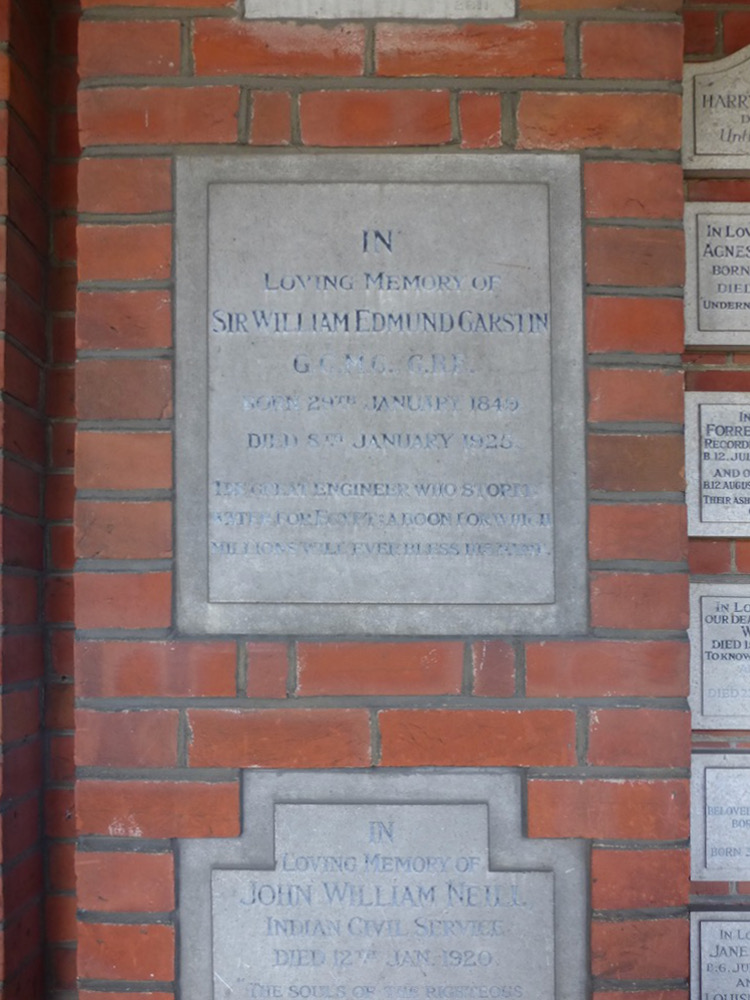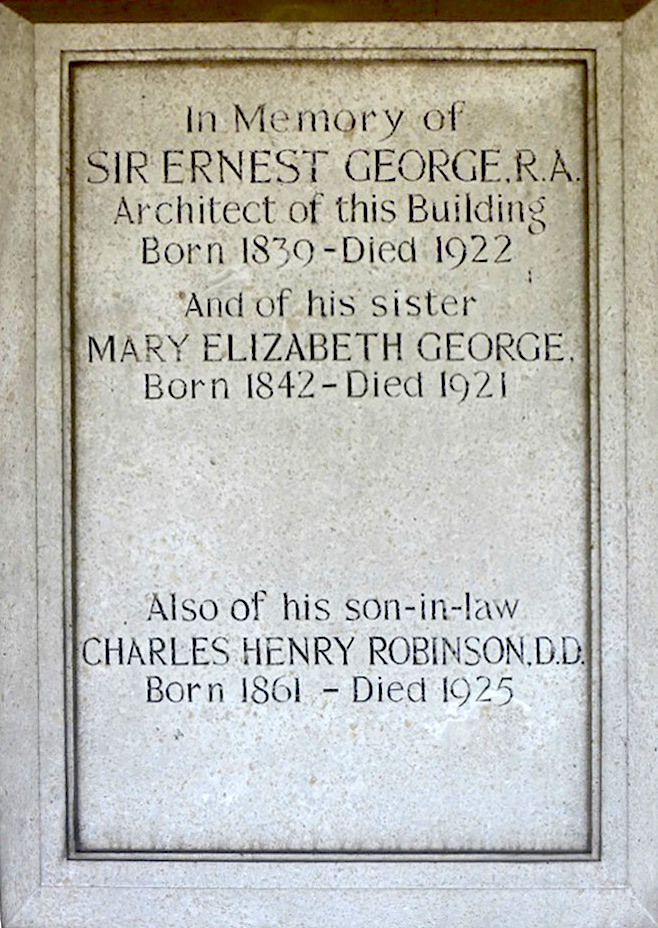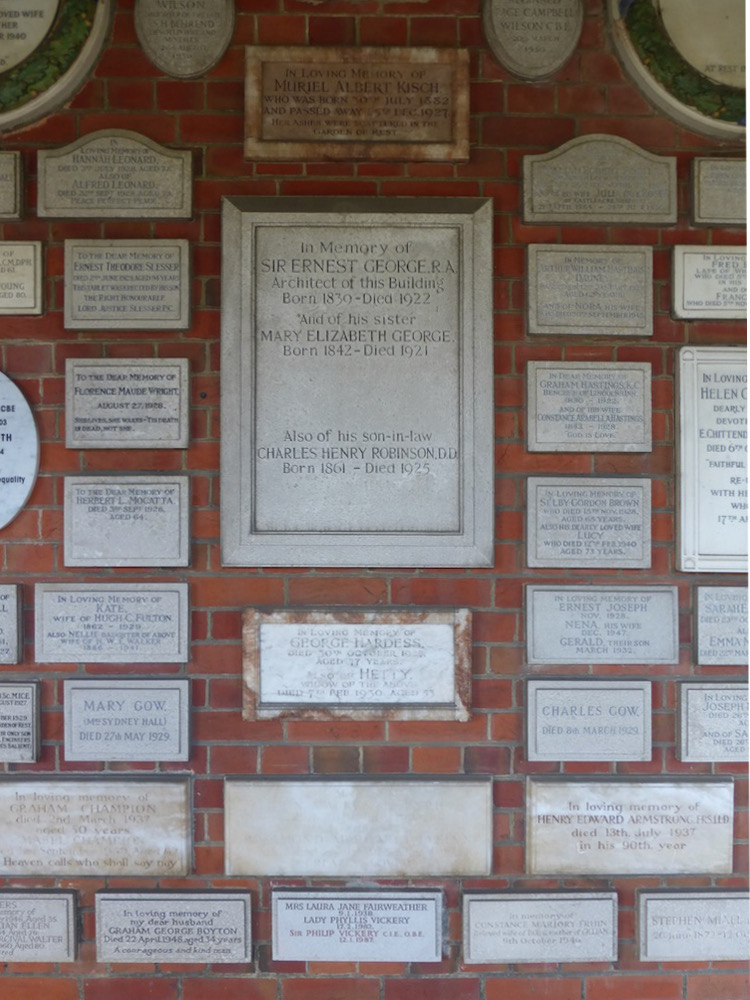Photographs by the author, with many thanks to historian Eric Willis of the Maintenance Department of the Crematorium for his guidance and information. You may use these images without prior permission for any scholarly or educational purpose as long as you (1) credit the photographer and (2) link your document to this URL in a web document or cite the Victorian Web in a print one. [Click on the images to enlarge them.]


Left: The Freud corner in the Ernest George Columbarium. Right: Close-up of the urn containing the ashes of Sigmund Freud. The urn came from his own collections. Much visited, it now has a protective cover.


Left: Anna Pavlova's urn in the Ernest George Columbarium. She had been very popular in England after her first visit in 1909, and was based in Golders Green from 1912, greatly helping to promote British ballet: her last performance in England was at the Golders Green Hippodrome. Various attempts to return her ashes to Russia failed: her own family disapproved. Right: Below her urn is that of her husband and manager, Victor Dandré. Like Freud's corner, this has become a little personal shrine to the famous ballerina.


Left: The caskets of another ballet dancer, the Danish ballerina Dame Adeline Genée(-Isitt), and her husband, also in the Ernest George Columbarium. After being invited to the Empire Theatre in late 1897, she too became a leading light in British ballet world, marrying a London businessman (Frank Issit) and settling in the Regent's Park area. She died in Esher, Surrey. Right: The large tablet here is in memory of Lord Simon Marks, son of one of the original founders of Marks and Spencer's, his wife Miriam, and also Lord Israel Seiff, his brother-in-law, who took over as chairman and joint managing director of the company when Simon Spencer died.


Left: The sculptor George Frampton's niche, shared with his wife Christabel. Right: Close-up of the tablet in memory of Gorge Frampton, with its moving epitaph: "Cherish / the memory of / George Frampton / sculptor 18760-1928 / He made beauty and / inspired love all / the days of his life." This too is often asked for at the crematorium, because of the much-loved Peter Pan statue in Kensington Gardens.



Left: Memorial tablet in the Cloisters for Sir William Garstin (1845-1925), the engineer responsible for the Aswam Dam and other major projects, who earned the sobriquet, "the treasure of Egypt" (qtd. in Baigent). Right two: Surrounded by other memorial tablets, the one for the architect Sir Ernest George himself, who designed the main part of the crematorium here with his partner Alfred Yeates.
Related Material
- Golders Green Crematorium: a brief introduction
- The "North London Crematorium" (original architects' design)
- Views of the crematorium from outside
- Urns and memorial tablets — a few examples
- Views in the gardens
Bibliography
Baigent, Elizabeth. "Garstin, Sir William Edmund (1849–1925), civil engineer." Oxford Dictionary of National Biography. Web. 1 March 2020.
Golders Green Crematorium, Barnet. Historic England. Web. 1 March 2020.
Golders Green Crematorium: Information. London Cremation Company. Web. 1 March 2020.
Pritchard, J. "Genée [married name Isitt], Dame Adeline [real name Anina Margarete Kirstina Petra Jensen] (1878–1970), ballet dancer." Oxford Dictionary of National Biography. Web. 1 March 2020.
_____. "Pavlova, Anna Pavlovna [formerly Anna Matveyevna Pavlova] (1881–1931), ballet dancer." Oxford Dictionary of National Biography. Web. 1 March 2020.
Golders Green Crematorium, Barnet. Historic England. Web. 1 March 2020.
"Golders Green Crematorium, London: The East Columbarium." RIBA. Web. 1 March 2020.
Pearson, Lynn F. Discovering Famous Graves. Princes Risborough, Bucks: Shire, 1998.
Created 1 March 2020